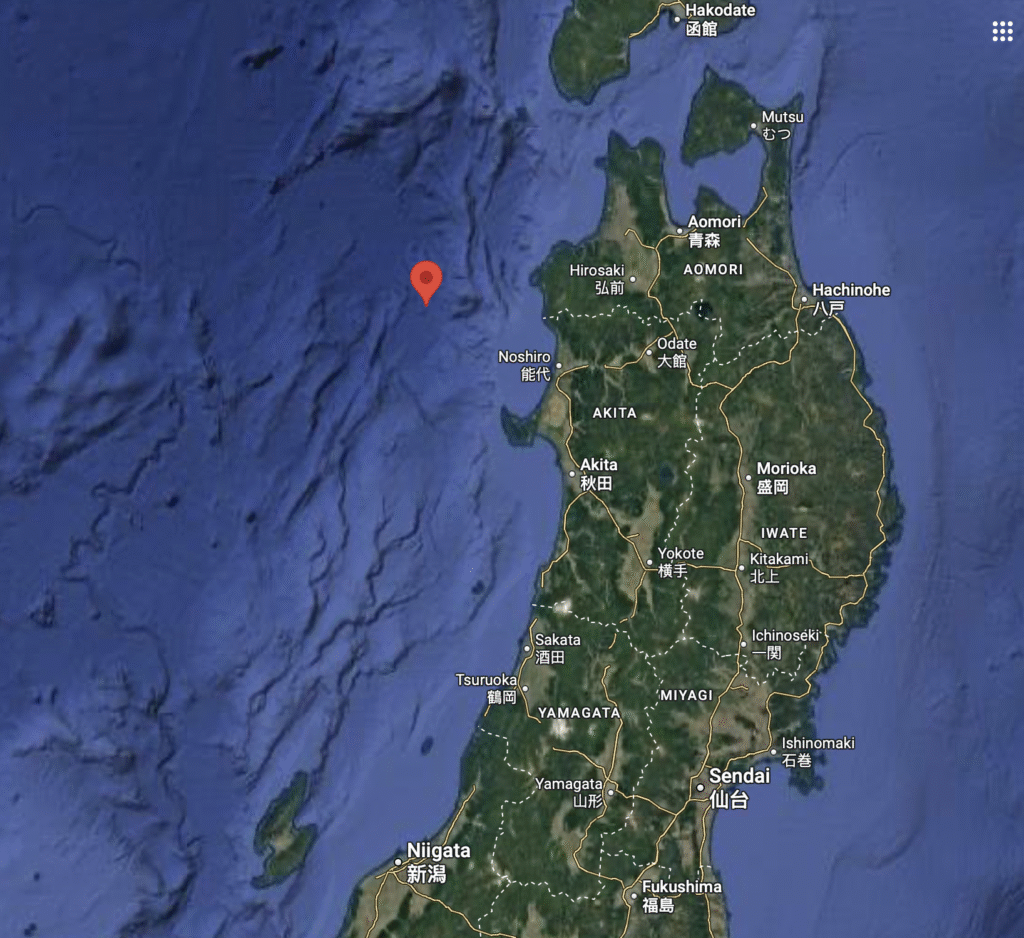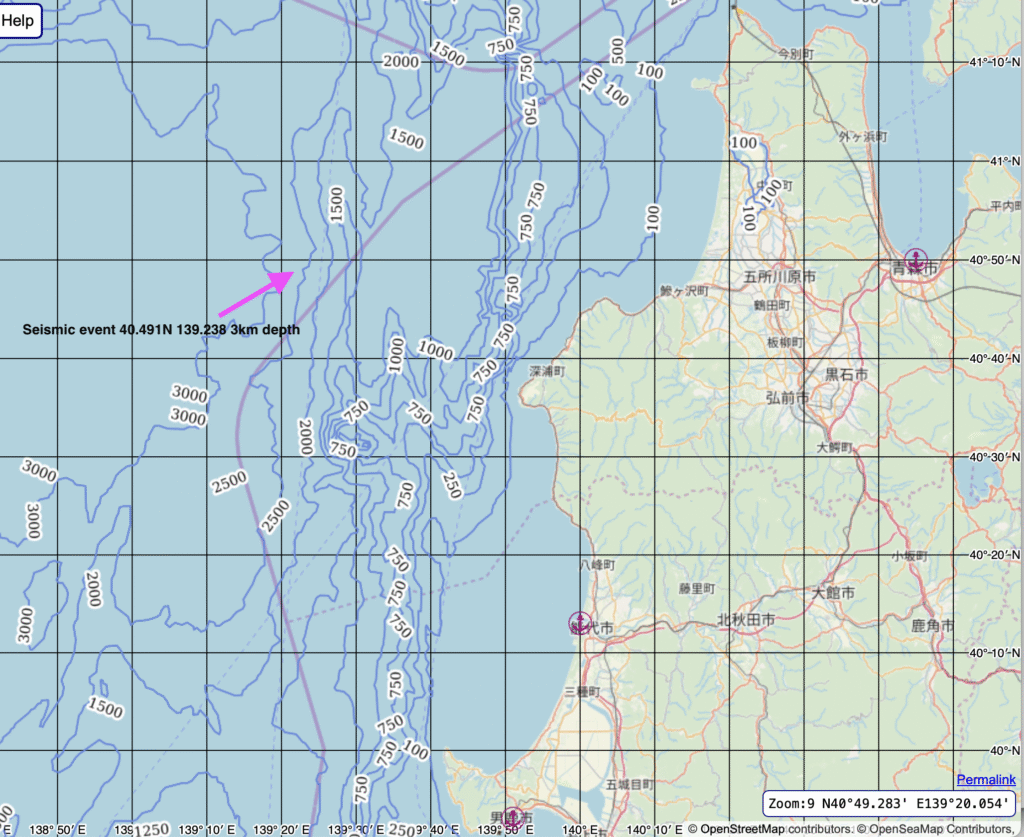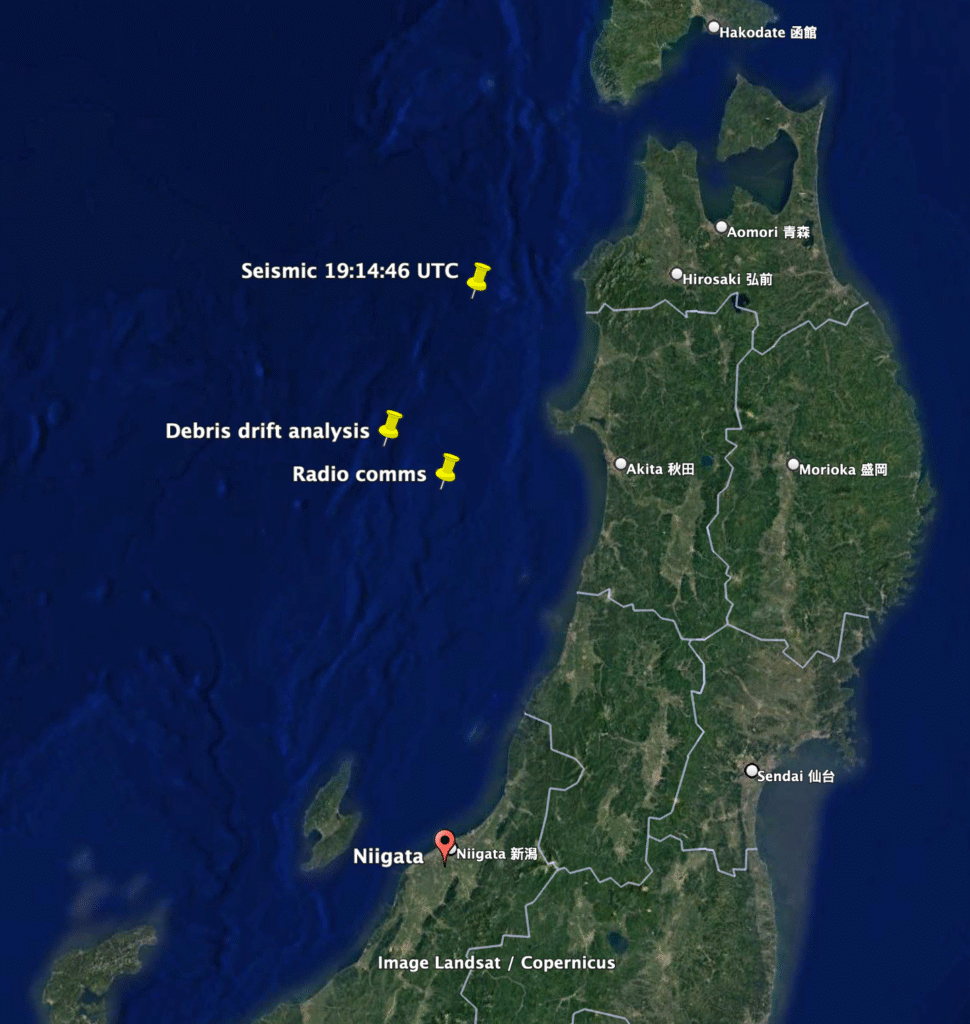From debris dispersal KAL-007 appears to have come down north of Sado Island off the coast of Niigata. Japan has a large array of seismographic equipment and it is possible that a large aircraft such as a 747 would create detectable seismic event. Richard Godfrey calculates the impact of a Boeing 777 crashing at 490knots would generate the equivalent 1.3 tonnes of TNT. This would generate a seismic event of approximately 2-2.5 at the surface of the seabed. Typically oilfield seismic surveys use airguns that generate a signal of approximately 2-3Kg of TNT. Triangulation of such data may help pin point the crash location.
Swissair flight 111 crashed on 2 September 1998. Its crash location was determined using seismographic recorders at Halifax and Moncton which detected a seismic event at the time.
There is no seismic event recorded at https://www.data.jma.go.jp/eqev/data/bulletin/shindo_e.html however on the hypocenter database https://www.data.jma.go.jp/eqev/data/bulletin/hypo_e.html there appeared to be a plausible event matching the exact timing, magnitude of KAL007’s likely crash.
J198308311914466 02 40491 03 139238 09 27 21 33V 111 2 59W OFF AOMORI PREF
i.e. a magnitude 3.3 event at 40.491N 139.238E at a depth of 27km but with 21km depth uncertainty. A large depth uncertainty can imply a close to surface event caused by impact of aircraft. The approximate water depth at this location is 2750m.
The time and magnitude plus the depth uncertainty of this event make it a compelling signal. This is 3 minutes, 26 seconds after KAL007 last confirmed radio call at 19:11:20. It is 1 minute 30 seconds after KAL007’s possible last call. MH17 took between 1 and 1.5 minutes to fall to the ground after being hit by missile so the timing of this seismic event is near perfect. The magnitude is also of approximately the right magnitude for a full velocity impact. The error in latitude and longitude is approximately +/- 1km which makes a search effort much easier.
However, it turns out, unlike other seismic databases, JMA uses local time so this event doesn’t correlate and appears to be aftershock from the major Sea of Japan Earthquake that occurred at May 26, 1983, at 11:59:57.


Seismic event location with Brun’s estimated crash location based on radio comms 39.59894N 139.04645E. Independent drift analysis 39.8N 138.7E
I am currently trying to obtain the raw seismic waveforms from Tohoku University for reanalysis of the data as it is likely a small event such as caused by aircraft crash may have been interpreted as noise and not cataloged. Any progress in this area will be posted here

